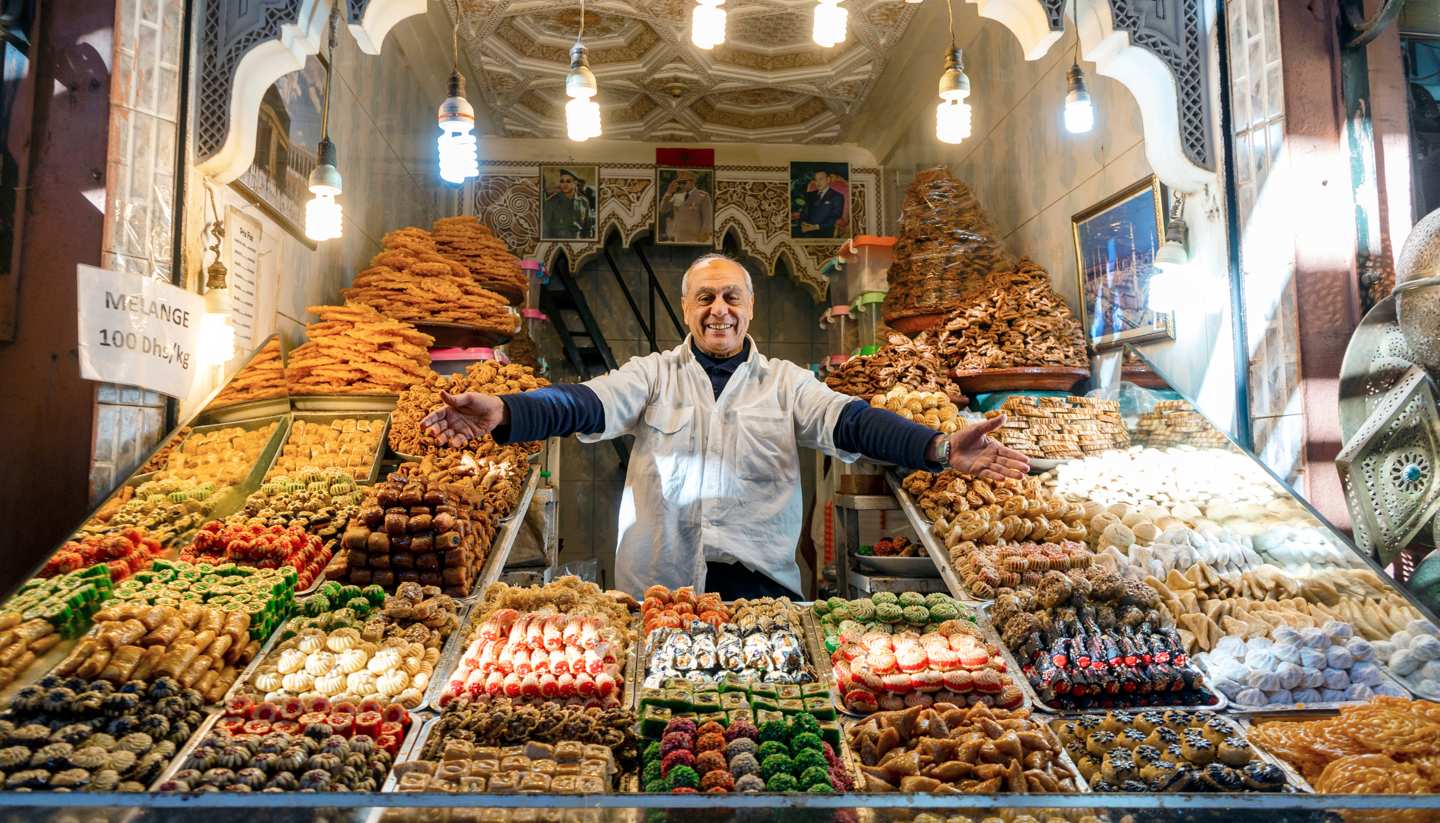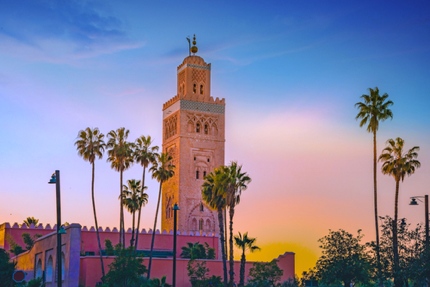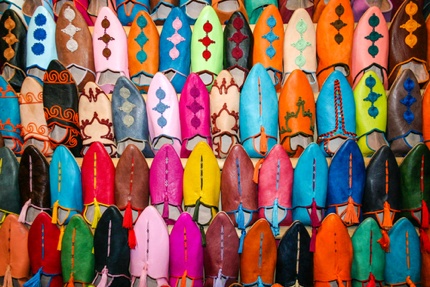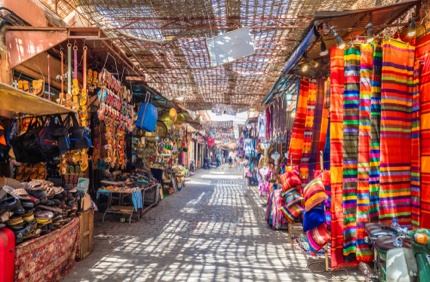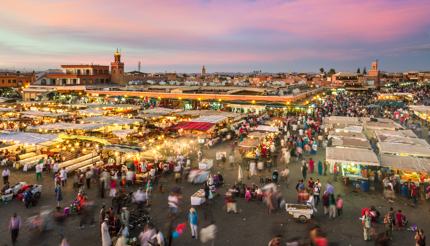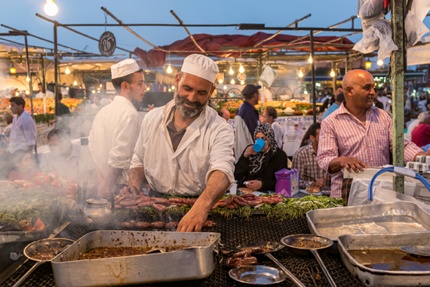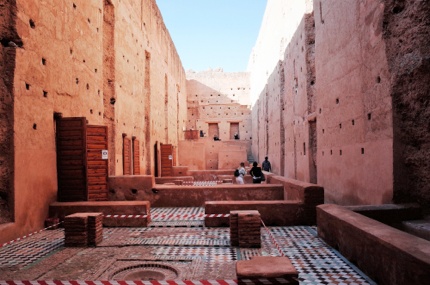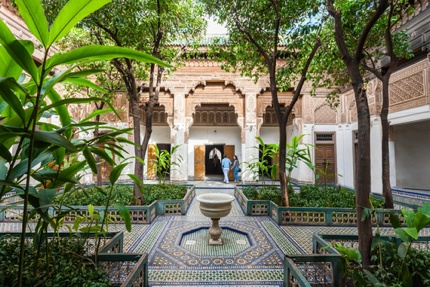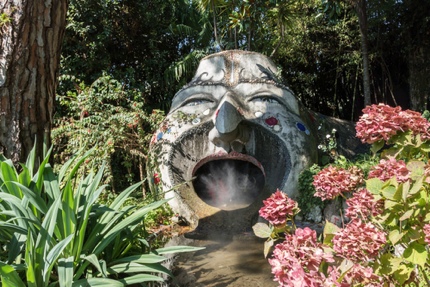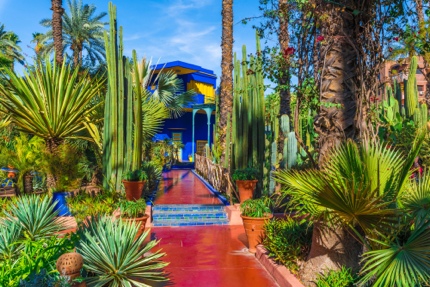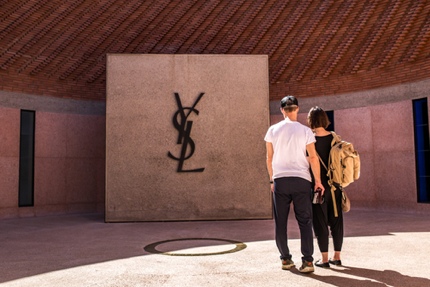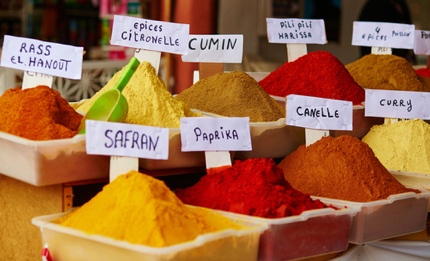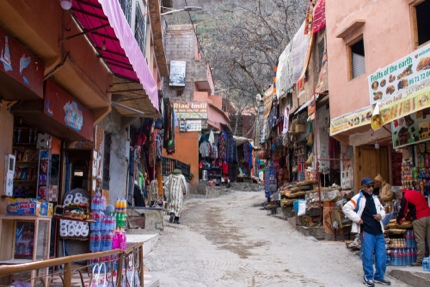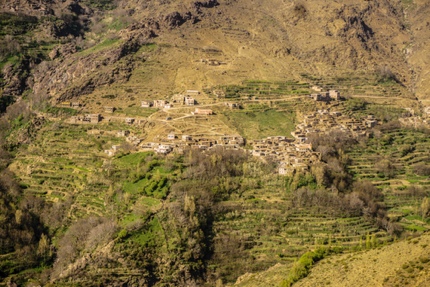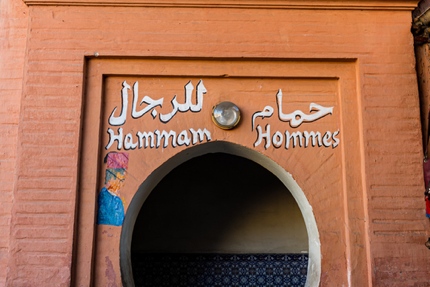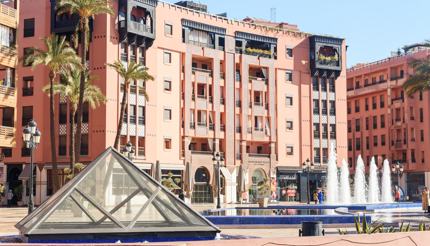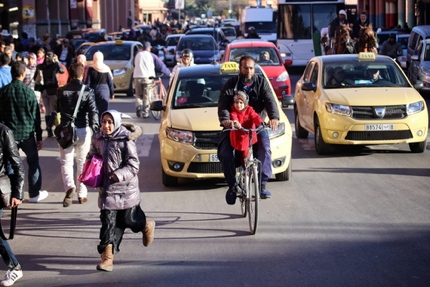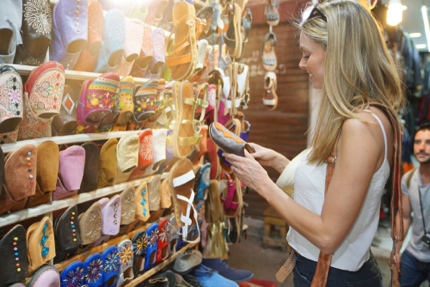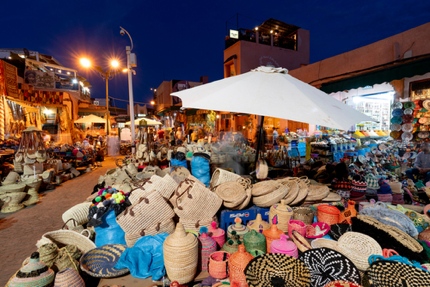Make the most of a week in Marrakech, including day trips to Ourika and the Atlas Mountains, with our seven-day guide and travel tips
Snake charmers, storytellers, food vendors offering steamed goat heads with or without eyes in Jemaa el-Fna, Marrakech, also spelt Marrakesh, is wildly intoxicating and appealing. Here are the top tips on how to spend seven days in Marrakech, including a day to the Atlas Mountains.
Day one: Time to acclimatise
Most visitors arrive at the Marrakech Menara International Airport, about 6.5km (4mi) southwest of the city centre. It is best to arrange a private transfer between the airport and your hotel beforehand. The fare may be slightly more expensive, but you know that the price is fixed and your driver will be waiting for you.
Once unpacked, most tourists tend to gravitate towards the central square, Jemaa el-Fna, and the nearby souks which cover several narrow alleys on the north side of Jemaa el-Fna. But before you venture any further, look up and use Koutoubia Mosque (also the tallest building in Marrakech) as your guiding star, in case you become lost in a warren of stalls and alleyways surrounding Jamaa el-Fna.
Moroccan souks are busy and colourful, selling a dazzling array of goods. You can find almost everything from endless rows of babouche (Moroccan slippers), sweet-smelling spices to modern art on canvases secured on a laundry line with pegs.
Popular souks include souk Semmarine (for fabrics and souvenirs), souk Larzal (wool or clothing, depending on the time of day), souk Zrabi (for carpets), souk Cherratin (for leatherware), souk Smata (for Moroccan slippers), and souk Haddadine (for lanterns and metalworks).
If you’re tempted to buy something, remember that haggling is expected. A good tip is to start 20% of the asking price and increase your bid from there, but don’t expect to outwit the sellers who do this daily with tourists from all around the world.
Once the sun dips its face below the horizon, head back to Jemaa el-Fna as the evening breeze draws out hawkers to set up rows of trestle tables and serve up barbecued meats, boiled snails and delicious tagines.
Then there are entertainers of every kind – musicians, dancers, henna artists and fortune tellers – all come to turn the square into a giant theatre. Amid the crowded and colourful scene, healers with bottles of herbs are ready to dispense cures for every ailment imaginable. At this point, if you feel like you are willing to pay good money for a magic potion that can mute your five senses right away, it’s time to retire to your hotel room.
Day two: Travel back in time
Founded more than a millennium ago, Marrakech has had many glory moments and to get a taste of those, visit cultural highlights El Badi Palace and Bahia Palace, both are situated just 800m (875y) apart.
El Badi was once Marrakech’s grandest complex with sunken gardens, and although only ruins remain today, its sprawling compound makes it easy to imagine the past grandeur.
Bahia Palace, arguably the most beautiful building in Marrakech, shows off striking stucco work and amazing mosaics, all are exquisite examples of Islamic and Moroccan design. The palace’s tranquil walled gardens also make for a relaxing haven.
If you still have time after that, consider visiting Musée du Patrimoine (Heritage Museum). Items displayed here are Moroccan artefacts owned by a private family.
Day three: Tour inspiring gardens and Musée YSL
Rise and shine, hop on a free shuttle (must be reserved in advance) bound for the captivating Anima (André Heller Garden), set in a 2-hectare (5-acre) plot in Ourika, 36km (22mi) south of Marrakech.
Backdropped by the Atlas Mountains, this highly imaginative garden is the brainchild of Austrian artist André Heller, who transformed the space into a garden bursts with full-grown trees and fragrant shrubs, along with various fanciful sculptures – some of which are good-humoured and may bring a smile to your face.
Once you’re back in Marrakech, make time for the tranquil Jardin Majorelle, another must-see sight. Created by French artists Jacques Majorelle over a span of 40 years, and later lovingly restored by the fashion designer Yves Saint Laurent and his partner Pierre Bergé, this perfectly manicured garden features pools and bamboos, along with giant cacti, palm trees and various plants from five continents. At the centre of the garden lies Musée Berbère, painted in eye-popping cobalt blue, exhibiting objects of Berber culture.
Around the corner from this garden is the gorgeous Musée Yves Saint Laurent. Launched in 2017, this museum charts the iconic moments of this design legend and shares how deeply the Moroccan culture and landscapes have helped to shape his designs.
Day four: Join a cooking class
Moroccan food is now the culinary star of Africa, so join the cause and enrol in a cooking class. There are many classes available and prices often start around US$40 (£30).
Most cooking classes allow you to choose the dishes that you’d like to learn and the chef will take you shopping for fresh ingredients required to make the dishes.
Day five: Hike in the mountains
By now, you’re probably ready for a break from the hustle and bustle of Marrakech, so take a trip to the Atlas Mountains where nature is the true attraction.
Imlil, 90km (56mi) south of Marrakech, is the hub for those starting their journeys into the High Atlas. You can choose to walk around the village at leisure or tackle a more demanding day hike. If you’re fit and have 8 hours to spare, consider hiking the scenic trail twisting through a few Berber villages towards Tizi n’Tacheddirt.
Alternatively, you may join one of the many day tours from Marrakech to Imlil and the surrounding valleys. Most tours include a traditional Berber lunch, a camel ride and a visit to an argan oil co-op.
Day six: Recovery time
After days of walking and visiting various places, it’s time to visit a hammam and unwind.
Almost all hammam visits will start with a quick rinse before spending a few minutes in the hot room. When your skin is warm and wet, it’s time to apply (or hire an attendee to apply for you) a thin layer of savon noir (a black gel made of olive oil and olive mash) from your face/neck to toes. Let the gel works its magic for 10 minutes, then rinse it off with warm water, while scrubbing your body vigorously with kessa (an exfoliating glove). After that, it’s time for the cold room where you relax or get a massage.
For novices and visitors who don’t have their own supply of savon noir, kessa, brush, towel, flip-flops and a clean change of clothes, it’s best to check into a private hammam that provides a dedicated attendee to help you at every stage. In some hammams, you can also ask for a rhassoul clay treatment that comes after the exfoliating stage. Extracted from the Atlas Mountains, rhassoul is rich in magnesium and is said to make your skin healthier.
Leave your modesty at the door is our advice as getting scrubbed in a hammam is a very intimate experience.
Day seven: Last-minute shopping
If you haven’t grasped the art of bargaining or you simply want a more relaxed shopping experience, check out a few fixed-price alternatives.
Gueliz, an upscale neighbourhood 2km (1.25mi) west of the Medina, has international chains and independent boutiques that you don’t have to haggle. A good example is Place Vendome, a shop selling top-quality leather goods that won’t make you regret your purchase.
Ensemble Artisanal, not far from the Koutoubia, is also an excellent place for fixed-price handicrafts and fabrics.
While you can bag quality items in Marrakech, be mindful of scams, especially from shop owners who promise to ship the goods to you later. Chances are, you will never see the goods that you have paid for again.
Travel tips on Marrakech
As Marrakech is a tourist hub, most people in the service industry understand English, French and Spanish, but learning a few Arabic words won’t hurt either. Useful words include salam (hello), shukran (thank you), la shukran (no, thank you), ma ‘afaham (I don’t understand) and baslama (goodbye).
Be wary of strangers who want to help you when you’re lost, especially in a souk. Never accept their offers because – forgive our cynicism – they don’t do it out of the kindness of their hearts and their only objective is to demand payments from you later. Rely on a map or ask a fellow tourist instead. If you really can’t figure the way out, talk to a reputable shop owner and ask for their help.
The areas surrounding Koutoubia Mosque are walkable and public buses are safe but watch out if you need a taxi. Petit taxis are supposed to run on meter, yet some drivers may tell you that the meter is broken and offer you a fixed rate which will undoubtedly be higher than a metered journey.
Having coins and smaller bills will come in handy in Marrakech, especially if you intend to take taxis or enjoy the free shows at Jemaa el-Fna, as it is customary to give a few dirhams to performances that you like.
Popular souvenirs from Marrakech
- Babouche slippers
- Ras el Hanout spice blend
- Tajine the earthenware pot
- Handmade basket
- Djellaba, a loose hooded robe
Before you go, check out the Marrakech travel guide.
You may also like:
- The complete guide to exploring the Atlas Mountains
- 18 of the best art and culture festivals around the world
- Bathe thyself: Searching for the ‘Kneipp Cure’ in Germany
This post was updated in June 2021.
